8 Trendy Proteins You Should Be Eating
Protein is the golden child of the nutrition world right now, thanks to plenty of research showing that including protein at meals helps suppress appetite and aids in weight loss. And the benefits don’t stop there: This multitasking nutrient also helps to improve focus, regulate blood sugar, and maximize strength. But if you’re sick and tired of the usual suspects — egg whites, chicken, fish — I’ve got some up-and-coming protein foods to help liven up your menus and surprise your taste buds.
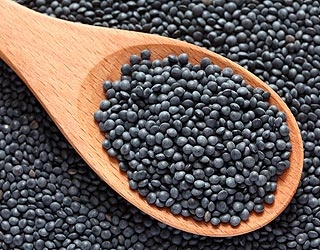
Black Lentils
In the world of nutrition, black is the new brown. Black quinoa, black rice, and black lentils are all über-trendy these days, and their unusual color offers more than just intrigue. These grains get their deep, dark hue from high concentrations of anthocyanins, the very same antioxidants found in blue-purple fruits like blueberries, plums, and cherries. Anthocyanins are potent compounds that are currently being investigated for their memory-boosting and cancer-fighting properties. Black beluga lentils, which earned their name because the small, shiny beads resemble caviar, are rich in protein and fiber — like all varieties of lentils. Just a half cup of cooked black lentils packs in about 12 grams of protein and 9 grams of fiber, a powerful nutrient combo that helps keep you full and energized. And, unlike starchy beans, dried lentils don’t require pre-soaking and cook up quickly in just 15 to 25 minutes!

Low-fat or Nonfat Kefir
“Going Greek” is all the rage in the yogurt arena right now, but could kefir be the next big thing? Kefir is a cultured milk drink that’s thick and tangy (sort of like a drinkable yogurt) — and like other dairy products, it crams a lot of good nutrition into a small package. One cup of plain, nonfat kefir (90 calories) provides 11 grams of high-quality protein, along with 30 percent of the daily value for calcium and a blast of tummy-friendly probiotics. Plus, it’s low in lactose, which means it’s generally a safe dairy option for people with lactose intolerance. Flavored varieties like strawberry, blueberry, and peach are delicious but contain added sugar, so just make sure you account for the extra calories. You can enjoy a glass of kefir straight-up, add it to fruit smoothies, or use as a substitute for buttermilk in recipes. Companies have even started making frozen kefir — a yummy, ice-cream-like treat.
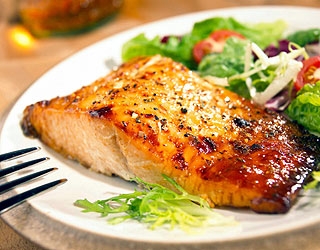
Artic Char
Move over salmon, there’s a new big fish in town! Like the more mainstream salmon, arctic char supplies protein to rev your metabolism, along with a plentiful dose of omega-3 fats, which benefit your body from head to toe. These all-powerful fats help lower cholesterol and blood pressure, improve blood flow, fight inflammation, nourish your skin, and may even boost memory and mood. Arctic char is low in contaminants, and farmed varieties are raised in a sustainable manner, making this fish a terrific alternative to farmed salmon. Plus, arctic char has a milder, more delicate flavor that some palates may prefer to stronger-tasting salmon. Try it on the grill or baked in the oven, finished with a generous squeeze of fresh lemon — and keep an eye out for it on restaurant menus too.
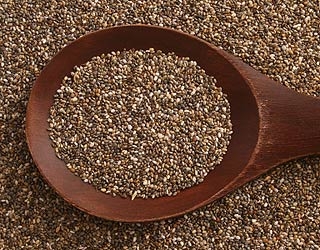
Chia Seeds
Chia Seeds
Chia seeds are edible seeds — yes, the very same ones used to grow Chia Pets — that are especially rich in plant omega-3 fats, like the more popular flaxseeds. And ounce for ounce, chia seeds contain more fiber and calcium than flax. You can pick up a bag in health-food stores or order them online. They’re also starting to make their way into packaged foods like chips, crackers, and cereals. Use chia seeds just as you would other seeds or chopped nuts; try them sprinkled on oatmeal, cereal, yogurt, or cottage cheese, or mixed into dips or salad dressings. Unlike with flax, you don’t need to grind them first because they’re completely digestible in whole form. Consider adding chia seeds to pancakes, muffins, and other baked goods too.
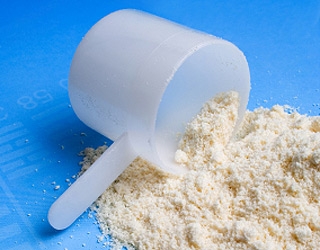
Protein Powders
Protein Powder
While it’s easier than you might think to get all the protein you need from food, if you’re looking for a fast, no-fuss way to inject more into your meals, consider one of the many protein powders on the market. Though brands vary significantly, most provide 20 to 25 grams of protein per scoop, which is equivalent to about three ounces of grilled chicken. Whey protein powder is the most popular variety, but you can also find egg-white powder and vegan varieties like pea, brown rice, soy, and hemp. Combine a scoop with skim milk and fresh or frozen fruit in the blender to make a protein-packed smoothie, or stir some into your favorite whole-grain pancake batter for a energizing and filling breakfast. Keep in mind that most brands are sweetened with artificial or natural sugar substitutes like sucralose and stevia.
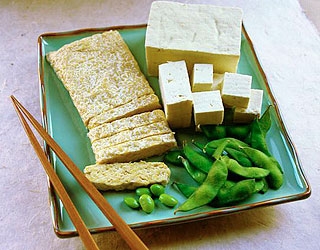
Tempeh
Tempeh
Originating in Indonesia, tempeh is a fermented soy food made from cooked whole soybeans that have been treated with cultures and formed into a dense, chewy cake. Though traditional tempeh contains only soybeans, many brands on the market today also incorporate grains, vegetables, and seasonings. A four-ounce serving of tempeh provides about 18 grams of vegetarian protein, along with an impressive 8 to 10 grams of fiber from the soybeans. It has a firmer, meatier texture and stronger flavor than its more popular “soy sister,” tofu, and though it’s definitely not yet a familiar food in US households, I challenge you to pick up a package and give it a try. Create tasty meatless meals by substituting chopped tempeh for ground meat in tacos or chili recipes or adding sliced tempeh to a vegetable stir-fry.

Quinoa
Quinoa
Considered a whole grain, quinoa is actually a protein-rich seed with a rockin’ nutritional profile. A cup of quinoa provides 8 grams of protein, about twice the amount found in other starches like brown rice or oats, and the extra hit of protein helps balance out blood sugar. Loaded with fiber, magnesium, and iron, this South American grain definitely deserves its new celebrity status. The best news about quinoa: It’s as easy to make as rice and cooks up in just 15 short minutes (prepare with low-sodium broth instead of water to add more flavor). Use quinoa as a base for stir-fries, add veggies or chopped nuts to make a pilaf, or layer it with nonfat yogurt and chopped fruit for a chic parfait.
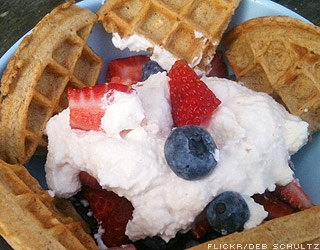
Part-Skim Ricotta
Part-Skim Ricotta
Ricotta cheese is just way too creamy and delicious to use only as lasagna filling, and I’m glad people are starting to capitalize on its versatility! A quarter cup of part-skim ricotta cheese is only 80 calories but delivers 7 grams of filling protein, along with a shot of calcium. (Be sure to pick up the part-skim variety, which has fewer calories and less saturated fat than the regular whole-milk version.) Mix a half cup of ricotta with a teaspoon of sugar, a splash of skim milk, and a dash of vanilla for a fantastic topping for whole-grain waffles along with fresh fruit. Or use it as a healthy spread replacement for cream cheese on toast or bagels (try adding sliced tomatoes too). For a delicious and nutrient-packed dessert, microwave frozen berries until just warm, then mix the berries and all of their juices with a scoop of ricotta. I guarantee you’ll find many more ways to use this rich-tasting, low-cal ingredient once you have it stocked in your fridge.
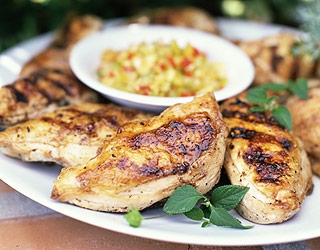
Intro
Protein is the golden child of the nutrition world right now, thanks to plenty of research showing that including protein at meals helps suppress appetite and aids in weight loss. And the benefits don’t stop there: This multitasking nutrient also helps to improve focus, regulate blood sugar, and maximize strength. But if you’re sick and tired of the usual suspects — egg whites, chicken, fish — I’ve got some up-and-coming protein foods to help liven up your menus and surprise your taste buds.

